$weet $ales

November 29, 2022
Throughout the school year, many Bergen County Academies (BCA) clubs and organizations hold bake sales in the lower lot during dismissal to fundraise for trips, equipment, grade-wide activities and more.
Not only is a bake sale the perfect treat for BCA students after a long day of classes and assessments, but it is also a quick and convenient way for groups of students to make a large amount of money.
The Academy Chronicle conducted a survey on what students thought about managing and buying from bake sales. A lot of the discussion in the lower lot during dismissal is over whether or not to buy from the bake sale of the day, what to get, and what the prices are.
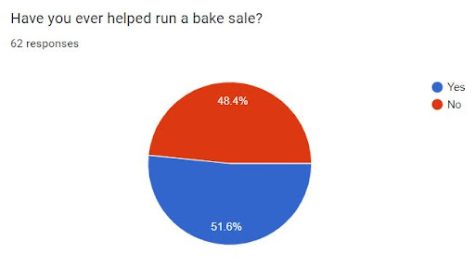
According to the survey, bake sales are a way for many club members to get involved with their club and help out. 51.6% of the survey respondents answered that they had helped run a bake sale at some point in BCA. “I don’t usually get to go to club meetings because of sports, but if my club has a bake sale when I don’t have a game, I’m the first to sign up to help,” said Simone Shah, an AAST sophomore who plays tennis and used to be in the Environmental Club. “It’s a really fun experience to be collecting money, keeping track of who gets what, and yelling out prices to my friends.”
When asked what the bake sales were for, there were a variety of responses. While they help support most Wednesday and morning clubs, bake sales also help fundraise for charity causes such as the Ukraine fundraisers, class councils and student council, and other groups such as BCA Flash and SPARK.

BCA bake sales are known for having everything from standard cookies and cupcakes to more interesting items such as pizza, churros and ramen. Many clubs also have signature items that only they are known for selling, and students count down the days until National Spanish Honor Society’s savory empanadas, the 2025 Class Council’s brownies a la mode, or Model UN’s Boba tea.
According to the survey, brownies, cookies, pizza, and churros are the most successful bake sale items, with about half of the respondents selecting each.
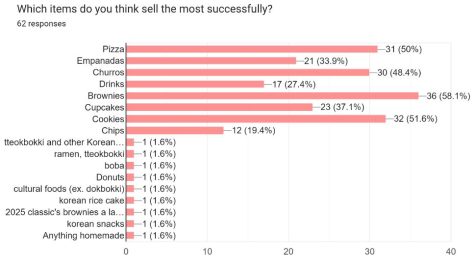
Many items cannot be sold at bake sales due to temperature, issues with delivery, and inconvenient preparation time. When students were asked to pick one dream item they would like to see at bake sales, the most common answers were hot chocolate, homemade baked goods, and warmer, more savory foods such as rice and chicken.
A large portion of the respondents did not name specific items but suggested that they would like to see lower prices. Bake sale prices range from less than a dollar to $5 depending on the item and the club. Many clubs take advantage of the weather and the mood of the day to charge higher prices for drinks or ice cream while having a smaller portion size.
The survey asked students whether or not they thought bake sales had reasonable prices, and 36.7% reported “Usually not” or “Not at all.” 40% reported that the reasonableness of prices depended on the club.
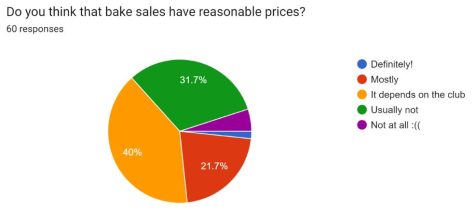
Students suggested that prices were also the main reason why they did not buy from bake sales that frequently. When asked to rate how frequently they bought from bake sales, 38.7% of respondents chose 1, which corresponded to “not even once a month.” Only 3 people picked a 5, “almost every day.”
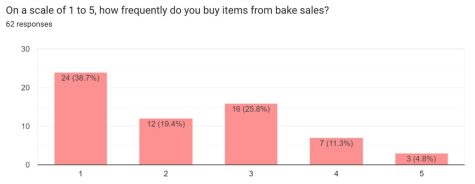
Eesha Oza, an AMST sophomore and the treasurer of the Academy Chronicle and the 2025 Class Council explained that she thought items were very overpriced, even in the bake sales she helped run. “We still make money because people want things badly enough. The only time I buy something is if my friends are running the bake sale and I want to support them.”
Regardless of prices, bake sales are important ways for students to reward themselves at the end of the day. “I don’t really like spending a dollar on a cookie that I’m going to eat in 30 seconds,” said one AAST sophomore as she treated herself to a donut. “But after I get through a really bad day, I like to be able to buy something for myself. It’s something to look forward to and it makes me feel proud of my hard work.” In addition to boosting motivation, they are also essential parts of most clubs’ fundraising.
When respondents were asked to rate how much fundraising their clubs did outside of bake sales on a scale of 1 to 5, 54% rated their club’s fundraising 1 or 2. Only 3 people chose 5.
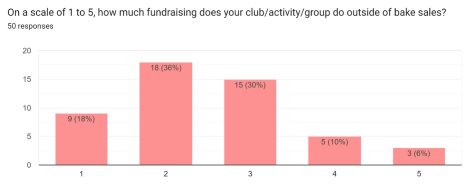
Other types of fundraising that BCA clubs do include selling candy grams or merchandise, running raffles, and hosting 5K runs. However, these are much harder to organize and require more students to collaborate in order to plan them effectively. While they are necessary because of how hard it is for clubs to get bake sale dates before spots fill up, these fundraisers are much less convenient.
“It’s really easy to organize a bake sale,” said Kai Kim, an AAST sophomore who ran bake sales with the 2025 Class Council. “If even 5 or 6 people get a box of something on their way home from school and they bring it in the next day, that’s at least $200 of sales for the club.”
Both simple and successful, bake sales continue to be an accepted part of end-of-day procedures at BCA, allowing students to end the day positively while also supporting their peers.





